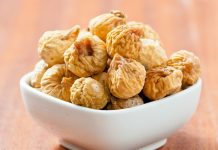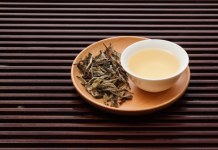
Sage isn’t just the perfect ingredient for stuffing turkey, it also has a slew of health benefits for adults and children. But let’s talk about the health benefits of sage for kids here.
Sage
Sage, part of the mint family, gets its name from the Latin salvere, which means “to be saved.” Sage or Salvia officinalis, as is commonly known, tastes like pepper and is used to flavor food. Outside of the kitchen, it has proven healing powers.
Health Benefits of Sage for Children
Conventionally, it was used as treatment for fever and colds, and inhaling it would send insomniacs to sleep. It has many health benefits for both children and adults, but let’s take a close look at what sage can do to make kids healthy:
Kills bacteria and keeps infection at bay: According to in vitro studies, sage successfully kills bacteria like E. coli and keeps infection at bay.
Gets rid of indigestion and dyspepsia: Sage is rich in antioxidants and can therefore get rid of indigestion and dyspepsia gently when taken as a herbal tea. It also helps with metabolizing food ingested by stimulating the production of gastric juices and bile in the digestive system.
Eliminates burning sensation in the mouth and throat: Sage tea is popularly applied topically as a rinse or to gargle with when a child suffers from inflammation in the throat and mouth. For this, sage is also used in various forms, such as extract, essential oil and tincture.
Fights infections and restores children to good health: If children have infected gums or mouth ulcers, the antiseptic property of sage will heal them back to health effectively. It also contains phenolic acid which fights the action of Staphylococcus aureus. According to research, sage oilcan fight Salmonella and E. coli, apart from fungi and yeasts like Candida albicans. Since sage contains tannin, it works like an astringent and can therefore treat diarrhea among infants and children.
Helps relieve typhoid, biliousness and liver-related problems: Sage has already proved to be reliable in treating typhoid fever, biliousness and liver-associated problems. It also brings relief to children suffering from kidney problems, lung or stomach hemorrhage, head colds, quinsy, palsy, measles and joint pains.
Other kinds of medical relief: Children who sweat excessively in cases of phthisis get great relief from nervous headaches when they take an infusion of sage leaves.
Relaxes muscle tension: Sage also works anti-spasmodically to reduce muscle tension. So, it’s not surprising that it is used for steam inhalation for asthmatic children. Where children have congested airways, sage helps to clear the passageways and prevents any secondary nasal infection.
Improves memory: Research proves that sage is capable of improving memory and brain working. In fact, it can improve the ability of an individual to recall words and his or her speed of attention.
Relieves flatulence: Sage has inherent properties of getting rid of flatulence among babies and children, particularly stomach gripes and other digestion-related issues. It is also reliable in treating dysmenorrhoea among girls at puberty. It has a bitter-tasting ingredient that stimulates the secretions of the upper digestive organs, brings about mobility in the intestines, encourages bile flow and enables the pancreas to function optimally, while sage oil works to get rid of flatulence and restores digestive order.
Soothes nervous and excitable children: Sage also soothes and relaxes nervous and excitable kids and prevents them from being dizzy. When taken in regular doses, it does bring the promised relief.
Relieves a sore throat: Sage is very effective when used to get rid of a sore throat. Dried sage leaves when added to half a cup of water should be boiled and steeped for about 15 minutes. After straining it, it should be sweetened with honey and used to gargle with at least twice a day.
Tones oily skin: Children and teens who have oily skin can reduce the shine in their faces by adding a spoon of sage to a cup of boiling water. After steeping it for 30 minutes, it should be strained and cooled before patting the face with it.
Conditions the hair: Sage oil is proven to get rid of oily hair and dandruff and can also be used as a shampoo due to its cleaning properties.
Side-effects of sage
Thujone contained in sage essential oil can be toxic when consumed in large quantities, so it’s best to keep off this oil. It can cause vertigo, kidney damage, seizures, escalated heart rate, wheezing, vomiting and vertigo. Also, older children should not drink sage tea as it leads to a dry mouth, besides skin irritation when used topically. To counter these ill-effects of sage tea, it’s best to blend sage tea with mint, catnip or lavender.
Parents contemplating giving their kids should beware of sage’s reactions of stimulating hypersensitivity or allergies in children. Swallowing sage powder can lead to breathing difficulties, yet another cause of concern.
Parents or care givers of children should be very careful when applying sage oil on children topically as it could lead to irritation of the skin. To avert such a situation, it’s advisable to use clary sage oil which has many benefits of sage oil but is milder.
Measures to take before giving your child sage
In general, children should not be given essential oils internally, or undiluted for topical use. Before giving children this herbal medicine, sage essential oils should be diluted much more than they would for adults as they could damage babies’ and children’s tender skin.
If necessary, parents should ask their doctor to do a patch test before administering this medicine. Also, care should be exercised before using this oil as treatment for kids’ problems as children have been reported to suffer seizures, though rare.
The reason children should not be given essential oils as treatment for their medical problems is that they are more sensitive to essential oils than adults. Besides, in childhood, children’s immune systems are not fully developed when they are exposed to essential oils, so they are less capable of dealing with its negative effects. However, by and large, children below the age of six years should not be given sage essential oils. The recommended dosage for children above this age is not more than 30 drops of sage essential oil for every ounce of carrier oil.
References:












